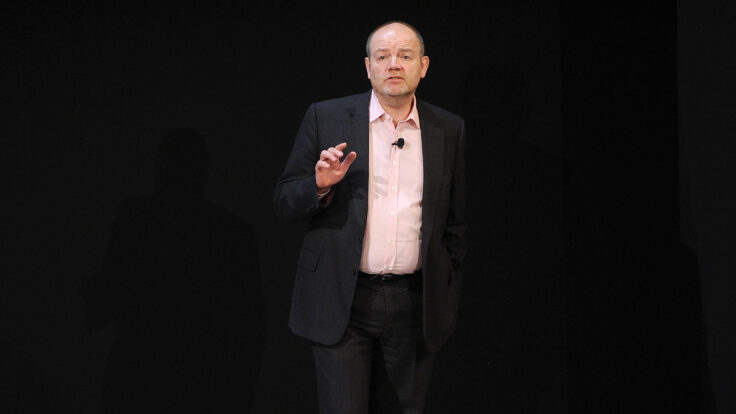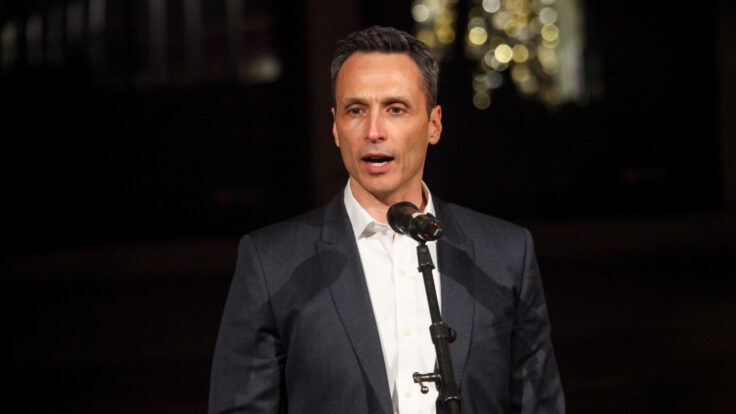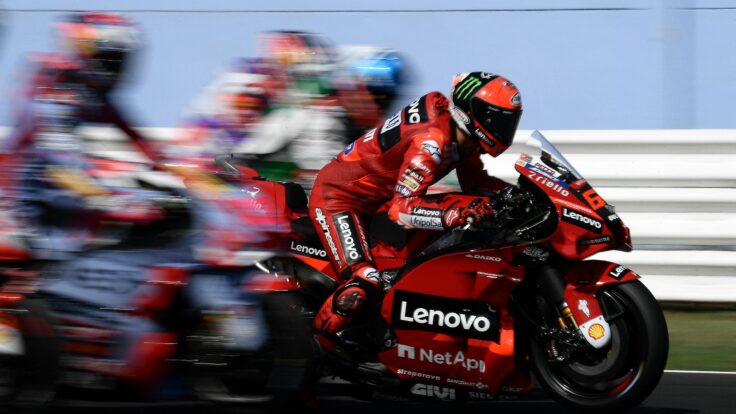
|
PREVIEW VERSION
|
|
|
|

|
Jon Kelly
|
|
Good morning,
Thanks for reading The Backstory, your weekly digest of the incredible
work at Puck.
It was another fabulous week here at Puck: Matt Belloni delineated Apple’s Hollywood headache and explained what went wrong for UTA’s Jeremy Zimmer; Dylan Byers evaluated the Times’s A.I. playbook; Eriq Gardner detailed a wild Palm Beach lawsuit; Lauren Sherman captured the essence of Phoebe Philo’s next micro-act; Rachel Strugatz infiltrated the
Estée Lauder boardroom; Sarah Shapiro scrutinized the Nordstrom revival; Marion Maneker parsed the Walton family’s art strategy; Julie Davich auctioned with the in-crowd; Bill Cohan got a market gut check from esteemed analyst Mike Mayo; and John Ourand monitored a sports media defenestration. Meanwhile, Leigh Ann Caldwell diagnosed Chuck
Schumer’s swirling crisis; Peter Hamby checked the crosstabs on a startling Trump poll; Julia Ioffe offered her kremlinology of Putin’s latest Ukraine ploy; and Abby Livingston pulse-checked the Democratic tea party.
|
|
|
Check out these stories, and others, via the links below. And stick around for the backstory on how it
all came together.
|
|
|
A MESSAGE FROM OUR SPONSOR
|
Following a record-breaking 25 million average viewers in Japan for the first game of the season, Major League
Baseball’s traditional Opening Day gets underway on Thursday, March 27. Opening Day will be highlighted by two nationally televised games on ESPN when the New York Yankees and A.L. MVP Aaron Judge face the Milwaukee Brewers at 3 p.m. Eastern. The second game will feature the defending World Series champion Los Angeles Dodgers and N.L. MVP Shohei Ohtani against the Detroit Tigers at 7 p.m. Eastern.
MLB’s
banner 2024 season featured the fastest average time of game in 40 years, the most stolen bases in 109 years, the first consecutive attendance gains in 12 years, increased viewership across its media partners, growth in younger audiences, the most-streamed season in history, and the most-watched World Series in seven years.
|
|
|

|
FASHION
|
|
Lauren
Sherman weighs into Arnault primogeniture and the Gap renaissance.
and…
Rachel Strugatz surveys an Estée Lauder makeover.
meanwhile…
Sarah Shapiro inspects a retail go-private strategy.
|
|
|

|
ART MARKET
|
|
|
|

|
HOLLYWOOD
|
|
Matt Belloni
recounts how Jeremy Zimmer lost the troops at UTA and conveys Apple’s streaming challenges.
and…
Scott Mendelson
examines the box office five years after Covid.
meanwhile…
Eriq Gardner offers a talmudic reading of Ike Perlmutter’s
scintillating lawsuit.
|
|
|

|
WALL STREET
|
|
Bill Cohan
chats with a C.E.O. whisperer about the economic weather vane.
|
|
|

|
MEDIA
|
|
Dylan Byers
envisions how artificial intelligence will remake the Times.
and…
John Ourand decodes an ESPN shake-up.
|
|
|

|
WASHINGTON
|
|
Leigh Ann Caldwell
enters the Schumer bunker.
and…
Julia Ioffe predicts Zelensky’s next move.
meanwhile…
Peter Hamby
gets his hands on some scary Trump data, and Abby Livingston digs into the fissures on the left.
|
|
|

|
PODCASTS
|
|
Dylan and The Information founder Jessica Lessin
discuss the next wave of digital media on The Grill Room.
and…
Former Villanova coach and broadcaster Jay Wright shares his bracket with Ourand on The
Varsity.
and…
Lauren and the stylist Karolyn Pho revel in the Jonathan Anderson-to-Dior news on Fashion People.
and…
John Heilemann and former federal prosecutor Andrew Weissmann assess Trump’s attacks on the judiciary on
Impolitic.
and…
Matt and Axios’s Sara Fisher anticipate how the president’s policies will impact Hollywood on The
Town.
and…
Bill and Peter chew over Wall Street’s tariff anxieties on The Powers That Be.
|
|
|
As a reminder, you can update your profile at any time to get more stories like these directly in your
inbox. Click here to customize your email settings.
|
The Message
Isn’t the Media
|
Early in my career, back in the days when I occasionally wore a tie to the office and always
carried a briefcase (lest anyone think I was some soft-punimed jester), I remember sitting through a long and tedious corporate presentation in the old Condé Nast Building at 4 Times Square. Apple had recently introduced the iPad, the latest tool suggesting that the tsunami coming for the magazine business was going to be far more devastating than any industrial forecaster had predicted. Naturally, the tech company was rolling out its new product with its trusted partners
via polite PowerPoint presentations manned by charming interlocutors. On this particular morning, a room of us nodded along as a newly minted corporate V.P. proselytized about how this technology would amplify our businesses—bringing us closer than ever to our consumers, offering more data to advertisers, etcetera.
In those days, before the ubiquity of smartphones allowed apathetic employees to drift off into the digital ether, grizzled veterans simply got haughty when they had to sit
through corporate dissertations. In this instance, my colleagues telegraphed their displeasure to the young whippersnapper onstage via blank stares and cutting looks. You didn’t need to attend any sort of semiotics finishing school to understand their message: For 80 years, since Hadden and Luce had conceived Time, the magazine business had enjoyed remarkable stability and frothy margins. These guys didn’t need some lecture about how it was all going to
change, for better or worse. Afterward, the chatter was less about the impact of the technology than the tackiness of the presenter’s Zegna suit. Tough crowd.
|
|
|
A MESSAGE FROM OUR SPONSOR
|
Following a record-breaking 25 million average viewers in Japan for the first game of the season, Major League
Baseball’s traditional Opening Day gets underway on Thursday, March 27. Opening Day will be highlighted by two nationally televised games on ESPN when the New York Yankees and A.L. MVP Aaron Judge face the Milwaukee Brewers at 3 p.m. Eastern. The second game will feature the defending World Series champion Los Angeles Dodgers and N.L. MVP Shohei Ohtani against the Detroit Tigers at 7 p.m. Eastern.
MLB’s
banner 2024 season featured the fastest average time of game in 40 years, the most stolen bases in 109 years, the first consecutive attendance gains in 12 years, increased viewership across its media partners, growth in younger audiences, the most-streamed season in history, and the most-watched World Series in seven years.
|
|
|
Depending on one’s disposition, the dot-com fin de siècle was either an inopportune or
exhilarating moment to enter the media business. On the one hand, the great firmaments of the industry were slowly collapsing before our very eyes. I was a college student when Napster seized the public imagination, and I recall the bizarre sensation of downloading gratis the thousands of songs contained on the CDs in the immense Caselogic on my dorm room shelf.
Simultaneously, I’d watched as the publishing industry shrank from dozens of independent houses to a handful of
conglomerates. The moguls of the era, from Ted Turner to Sumner Redstone, had made their fortunes in the burgeoning cable space. But it was already clear by the mid-aughts that there were too many channels, their offerings were too thin, and most people my age were already being drawn inexorably to social media. When Tom Freston was fired by Sumner for losing out on MySpace to Murdoch, who acquired the company for nearly $600
million in 2005, my generation of media grunts could only laugh. We knew something that the moguls didn’t: That bird couldn’t carry a tune.
On the bright side, it seemed that everything was up for grabs. The neat and orderly world I grew up with—one organized by periodicals and monthlies; linear broadcast schedules; glutted multiplexes; and major book releases that were touted with advance interviews on 60 Minutes—was going to smithereens. And I was going to come of age amid a
generation that would be able to rewrite the rules of engagement. It would be apocryphal to suggest that I envisioned the future more presciently than anyone else who sat through that iPad presentation in the Condé amphitheater. But I got my first taste of the theme of my career: We were in for a transformative change that would only be followed by another… and then another.
Now, we’re countenancing the next great platform disruption, which comes in the form of artificial intelligence. In
the coming years, A.I. is going to remake our culture in profound ways. As my partner Matt Belloni has dutifully noted, so much of the agita underpinning last year’s writers strike coalesced around fears about how the technology might devalue creative talent. Our partner Lauren Sherman has reported aplenty on how the disruptive technology is going to upend the direct-to-consumer and e-commerce space. Last year, during a Puck private event that our founding
partner Bill Cohan hosted with Goldman Sachs C.E.O. David Solomon, Andrew Ross Sorkin asked a question from his seat in the lounge about how A.I. would impact investment banking. The event was off the record, but I can assure you that David has a fulsome and thoughtful answer.
Naturally, I’m fascinated by how media companies are managing this transition. And this week, Dylan Byers offered some profound clues about how
The New York Times is adopting the technology. The Times is a fascinating bellwether for a number of reasons. As a former employee of the joint, I can tell you that the new-hire orientation program used to mention the various transformative investments that the company had passed on. (Google, for instance, was one of them.) But this generation of Sulzbergers, who watched their forebears nearly lose the family jewel, aren’t so vain. They’re leaning into A.I. and
full cognizant of the opportunities, and savings, it will afford the company.
And yet, it’s a delicate process. Newsgathering is the ultimate relationship job, and the Times is profoundly sensitive about how it manages, and messages, its transition. ChatNYT, Dylan’s excellent story on the topic, outlines the opportunities and
challenges of this moment in our industry—one that we tend to view as exhilarating, but is not without its tradeoffs. Indeed, this is the story of our time, and the mise-en-scène of our industry. It’s precisely what you should expect from Puck.
|
Have a great weekend,
Jon
|
|
|
Need help? Review our FAQ page or contact us for assistance. For brand partnerships, email ads@puck.news.
You received this email because you signed up to receive emails from Puck, or as part of your Puck account associated with . To stop receiving this newsletter and/or manage all your email preferences, click here.
|
Puck is published by Heat Media LLC. 107 Greenwich St, New York, NY 10006
|
|
|
|



















